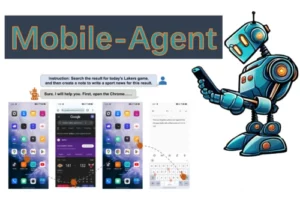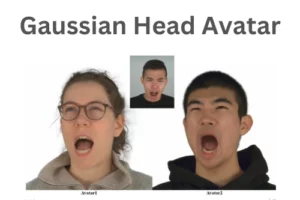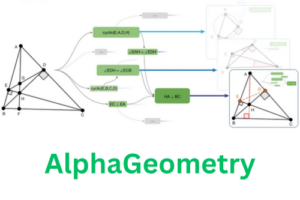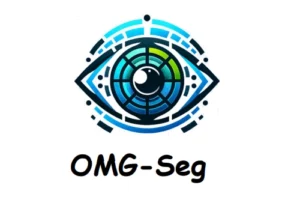Meet Aligning and Prompting Everything (APE) – an irresistible journey into the future where vision meets understanding through the aligning of universal perception in computer vision. Researchers from Tencent Youtu Lab, School of Computer Science and Technology East China Normal University, Shanghai, China and Key Laboratory of Multimedia Trusted presented this outstanding and interactive model.
Aligning and Prompting Everything (APE) is a groundbreaking universal visual perception model designed to simultaneously align and prompt all elements within an image, enabling versatile tasks such as detection, segmentation, and grounding through an innovative instance-level sentence-object matching paradigm.

The model takes the image input along with the prompt text related to the generated outcome. The generated output are in the form of different perceptions such as object detection, instance segmentation and semantic segmentation.
All the existing model are versatile and capable of handling diverse task related to computer vision, such as Mask2Former, DINOv and MaskDINO. However, these models depend on interactions between different types of data (cross-modality interaction), making it less effective for tasks like object detection and visual grounding.
Detailed pixel-level tasks like segmentation was also a focus but the major issue is the significant difference in the amount of annotated data available for different aspects of an image. Additionally, these methods struggle with distinguishing between foreground objects and background elements, leading to interference in segmentation tasks.
Sneak Peak of Aligning and Prompting Everything (APE)
The model Aligning and Prompting Everything (APE) understand and interpret visual information comprehensively. It aligns and prompts all visual elements within an image simultaneously. It is trained using a large and diverse dataset which helps the model gain a broad understanding of different visual concepts.
If you’re curious about the model’s performance, listen up: this model redefines the process of identifying visual elements by allowing the model to interact with natural language descriptions, enabling a more versatile and efficient way of handling queries or prompts related to large-scale visual information. This model also addresses the disparity in segmentation detail levels by training the model to equally understand and handle both specific objects and general background elements.
The versatility of these models allows them to permeate various industries such as education, entertainment and gaming, autonomous systems, healthcare etc. The research is available at Arxiv, code is open sourced and available at GitHub whereas the demo is available at HuggingFace.
Nuts and Bolts
Aligning and Prompting Everything (APE) comprises an image-based vision backbone extracting features, a language model focusing on text feature extraction, a transformer encoder utilizing cross-modality deep fusion after GLIP, and a transformer decoder.
This model generates scores, boxes, and masks corresponding to an image and a varied set of prompts. These prompts might encompass a wide array of vocabularies and sentences, including both specific objects and general elements.
Dataset and Evaluation
Aligning and Prompting Everything APE is trained using 10 diverse datasets, each with various annotation types. In the realm of object detection, it learns shared vocabularies concurrently from MS COCO, Objects365, OpenImages, and the long-tailed LVIS. Notably, OpenImages and LVIS function as federated datasets featuring sparse annotations. Shifting to image segmentation, APE utilizes mask annotations from MS COCO and LVIS but also incorporates class-agnostic segmentation data from SA-1B, encompassing both objects and backgrounds devoid of specific semantic labels. Additionally, for visual grounding, it combines insights from Visual Genome, RefCOCO/+/g, GQA, Flickr30K, and PhraseCut datasets.
The performance of Aligning and Prompting Everything (APE) was evaluated on various domain and task specific dataset. Object detection was evaluated LVIS, Objects365, OpenImages and MSCOCO. The models ability to ground objects in natural language was evaluated on description detection dataset (D3).
Aligning and Prompting Everything (APE) was compared with several other models that perform segmentation tasks. In general, APE demonstrates notably superior performance across PC-459, ADE20K, and SegInW, each having 459, 150, and 85 categories, respectively. It also shows similar performance levels for datasets like BDD, VOC, and Cityscapes, which consist of only 40, 20, and 19 categories, respectively. APE model suppresses all other models and achieves state of-the-art results on MSCOCO and LVIS.
Conclusion
The ability to align, prompt, and comprehend diverse visual elements within an image paves the way for applications across industries, from improving autonomous systems to enhancing accessibility and revolutionizing how humans should interact with technology. APE stands as a groundbreaking universal visual perception model, capable of simultaneously aligning and prompting all elements within an image to execute diverse tasks like detection, segmentation, and grounding.
My viewpoint based on the observation of this model compared to previous model is that APE has more advanced features. Detection, segmentation and grounding all these features are presents in a unified model and this is the distinctive feature of APE. Whereas, the user has to use different models for different tasks.
References
Similar Posts
-
Chinese Company DeepSeek Releases DeepSeek-Coder a LLM for Code Generation

-
Alibaba’s Mobile-Agent: A Smart Mobile Assistant

-
Grounded SAM: A Unified Model for Diverse Visual Tasks

-
Gaussian Head Avatar: High Quality Head Avatar Generator

-
Google DeepMind’s AlphaGeometry: Without Assistance Solving Olympiad Geometry Problems

-
OMG-Seg: A Unified Segmentation Model

